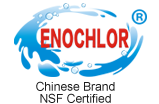Homepage / News Details
Use of bleaching powder
- Categroy:News
- Author:
- Origin:
- Release Time:2019-06-26 08:51
- Views:
【Summary】Use of bleaching powder
Use of bleaching powder
【Summary】Use of bleaching powder
- Categroy:News
- Author:
- Origin:
- Release Time:2019-06-26 08:51
- Views:
Use of bleaching powder

1: Used as bleach for wood pulp, silk, cloth and fiber bleaching in the paper and textile industry
2: Water disinfection, sterilization, and sanitation disinfection.
3: When the red (blue) ink on paper or clothing can't be washed with soap, you can mix 15% bleaching powder and 15% borax, add 70% water and shake it in the bottle, and wash it with liquid.
4: When there is beer on the white cotton cloth, soak the cloth in a solution of 1 part bleaching powder and 14 parts of water. After a few minutes, take the cloth out and wash it in water with a few drops of ammonia water.
5: Curry is contaminated with clothes and it is difficult to remove completely. Cotton clothing is bleached with bleach and immersed in oxalic acid to make the curry color slightly lighter. After taking out the clothes from the oxalic acid solution, the oxalic acid odor must be removed by rinsing with water.
Matters of attention in bleaching powder:
Hazard Summarizing: Hazard Categories: Oxidizing, corrosive. Hazardous characteristics: Explosion in case of high temperature will cause explosion; water or humid air will cause combustion and explosion;Oxyacid or dilute acid may cause combustion and explosion; in case of metal powder, it may increase the risk or cause explosion and explosion; in case of oil, it will cause burning and explosion; corrosive; it has a special pungent odor; Routes of entry: inhalation, ingestion, skin contact. Health Hazard: This product is irritating to the cornea and respiratory tract and can cause tooth damage. Skin contact can cause skin damage and wet skin contact can cause moderate to severe skin damage. Environmental Hazard: it has the generality of hydrochloride (chlorine-containing salt). Explosion Hazard: This product is flammable and irritating.
First aid measures: Skin contact: Take off contaminated clothing and washskin with plenty of running water for at least 15 minutes. Go to a doctor. Eye contact: Lift eyelids immediately and rinse thoroughly with plenty of running water or saline for at least 15 minutes. Inhalation: Leave the scene quickly to fresh air. Keep the airway open. If breathing is difficult, give oxygen. If breathing stops, perform artificial respiration immediately. Go to a doctor. Ingestion: Drink plenty of warm water and induce vomiting. Go to a doctor.
Fire Fighting Measures: Hazardous Characteristics: Strong oxidizing agents. When it encounters water or humid air, it will cause a fire and explosion. Mixing with alkaline materials may cause an explosion. Exposure to organic matter may cause a risk of burning. Heat, acid or sunlight will liberate highly toxic chlorine and oxygen. Hazardous combustion products: chloride, calcium oxide. Fire-fighting method: Wear a gas mask, wear a full-body fire suit, and extinguish the fire in the upwind direction. Extinguishing agent: DC water, misty water, sand.
Leakage treatment: Isolation of contaminated areas and restrictions on access. It is recommended that emergency personnel wear a dust mask (full face mask) and wear a protective suit. Use a clean shovel to collect in a dry, clean, covered container and transfer to a safe place. If there is a large amount of leakage, collect it for recycling or transport it to a waste disposal site for disposal.
Storage: Store in shade place, ventilated warehouse. Keep away from fire and heat. The temperature of the reservoir does not exceed 30°C, and the relative humidity does not exceed 80%. The package is sealed and must not be in contact with air. It should be stored separately from reducing agents, acids, and combustibles. Avoid mixing. Not suitable for large storage or long-term storage.
Releate News

Time of issue : 2024-04-22 08:56:03

Time of issue : 2024-04-15 16:52:27

Time of issue : 2024-04-09 10:13:04
CONTACT US
PRODUCTS
CALCIUM HYPOCHLORITE
TCCA
SDIC
BCDMH
FEEDBACK
© 1999-2018 北京网站建设有限公司 Copyright © 2012-2022 All Rights Reserved Powered by www.300.cn 冀ICP备12012949号 津公网安备 12010302002173号 Seo tag

